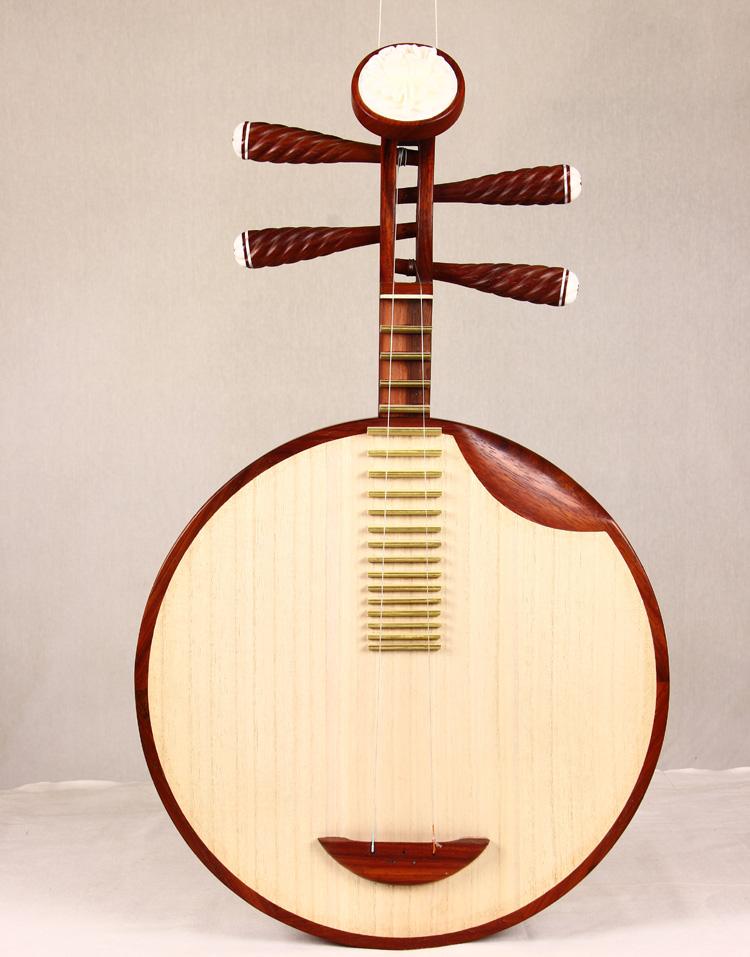The history of Yueqin
Yueqin, a traditional Chinese plucked musical instrument, has a round speaker and a short neck. The total length is 62, and the diameter of the speaker is 36.3 cm. The neck and speaker frame are made of mahogany and red sandalwood, and the frame is made of six pieces of wood with the same specifications. Top and back in tungsten wood. The box has two built-in sound beams and two sound columns. Four axes, four strings, every two strings are in the same tone, and they are tuned in fifths. There are eight or nine frets on the neck and top.

Yueqin originated from Ruan. As early as the time of Emperor Wu of the Han Dynasty (140 BC - 87 BC), the Chinese had created the Ruan.
But at that time, this musical instrument with "playing" and "pickling" as its main playing techniques was generally called the pipa. According to the preface of Fu Xuan's "Pipa Fu" in the Eastern Han Dynasty, Ruan was created by musicians at that time with reference to musical instruments such as qin, zheng, Zhu, and lying Konghou. It is: "The middle is empty and the outer is solid, and the heaven and earth are like; the round handle is straight, and the yin and yang are in harmony; the pillars have twelve and two, and the rhythm is also matched; the four strings."
From Yingshao's "Customs Tongyi" in the Eastern Han Dynasty, it can be seen that the length of Ruan at that time was three feet and five inches. In the Han Dynasty, it was called Qin Pipa. It spread to the Western Regions through the "Silk Road". Its shape can be seen in the reliefs of the Maijishan Grottoes in Gansu and the frescoes of the Northern Wei Dynasty in Dunhuang.
"Old Tang Book Music Records": "Ruan Xian is also Qin's pipa, but the length of the item is higher than that of today's system, and there are three columns in ten. "Playing like this, it is called Ruan Xian. Xian, Jin Shi is known for being good at pipa and rhythm."
Chen Yang's "Book of Music" (Volume 141) of the Northern Song Dynasty contains: "The moon qin, with a round shape and a long neck, with four strings and thirteen frets on the top, is the emblem of the qin, and it turns and responds to the rhythm. It was made by Ruan Xian in Jin Dynasty." Its shape is similar to that of Ruan, but it gradually changed. In the Qing Dynasty, Yueqin was completely different from Ruan, and the stem was shortened to the neck, which evolved into a modern style.
 渝公网安备 50010702504639号
渝公网安备 50010702504639号